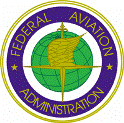Bird Strike Committee Proceedings

Other Bird Strike and Aviation Materials
Document Type
Article
Date of this Version
8-28-2007
Abstract
This Advisory Circular (AC) provides guidance on certain land uses that have the potential to attract hazardous wildlife on or near public-use airports. It also discusses airport development projects (including airport construction, expansion, and renovation) affecting aircraft movement near hazardous wildlife attractants. Appendix 1 provides definitions of terms used in this AC.
The Federal Aviation Administration (FAA) recommends that public-use airport operators implement the standards and practices contained in this AC. The holders of Airport Operating Certificates issued under Title 14, Code of Federal Regulations (CFR), Part 139, Certification of Airports, Subpart D (Part 139), may use the standards, practices, and recommendations contained in this AC to comply with the wildlife hazard management requirements of Part 139. Airports that have received Federal grant-in-aid assistance must use these standards. The FAA also recommends the guidance in this AC for land-use planners, operators of non-certificated airports, and developers of projects, facilities, and activities on or near airports.
Most public-use airports have large tracts of open, undeveloped land that provide added margins of safety and noise mitigation. These areas can also present potential hazards to aviation if they encourage wildlife to enter an airport's approach or departure airspace or air operations area (AOA). Constructed or natural areas—such as poorly drained locations, detention/retention ponds, roosting habitats on buildings, landscaping, odor-causing rotting organic matter (putrescible waste) disposal operations, wastewater treatment plants, agricultural or aquaculture activities, surface mining, or wetlands—can provide wildlife with ideal locations for feeding, loafing, reproduction, and escape. Even small facilities, such as fast food restaurants, taxicab staging areas, rental car facilities, aircraft viewing areas, and public parks, can produce substantial attractions for hazardous wildlife.
During the past century, wildlife-aircraft strikes have resulted in the loss of hundreds of lives worldwide, as well as billions of dollars in aircraft damage. Hazardous wildlife attractants on and near airports can jeopardize future airport expansion, making proper community land-use planning essential. This AC provides airport operators and those parties with whom they cooperate with the guidance they need to assess and address potentially hazardous wildlife attractants when locating new facilities and implementing certain land-use practices on or near public-use airports.


Comments
Advisory Circular No: 150/5200-33B